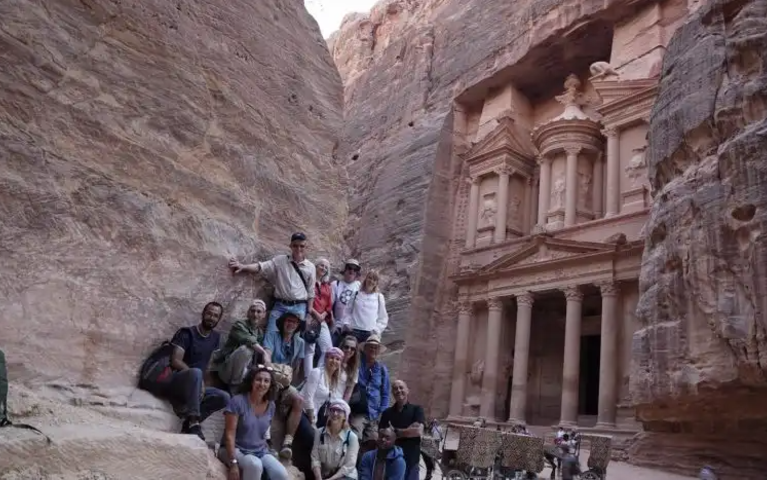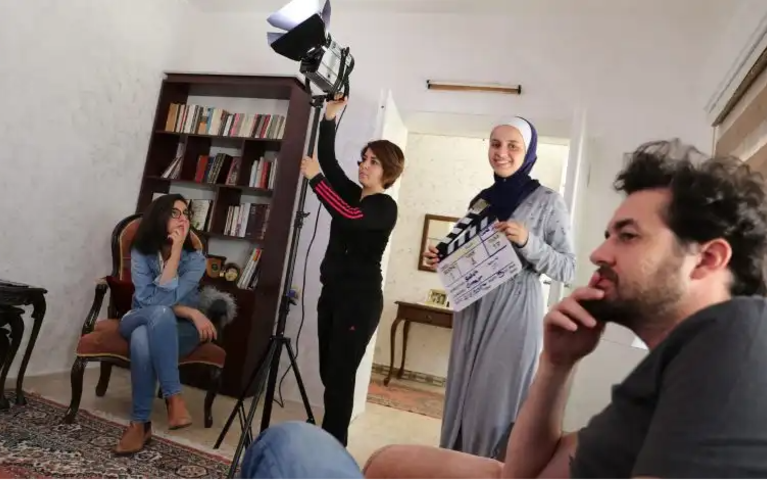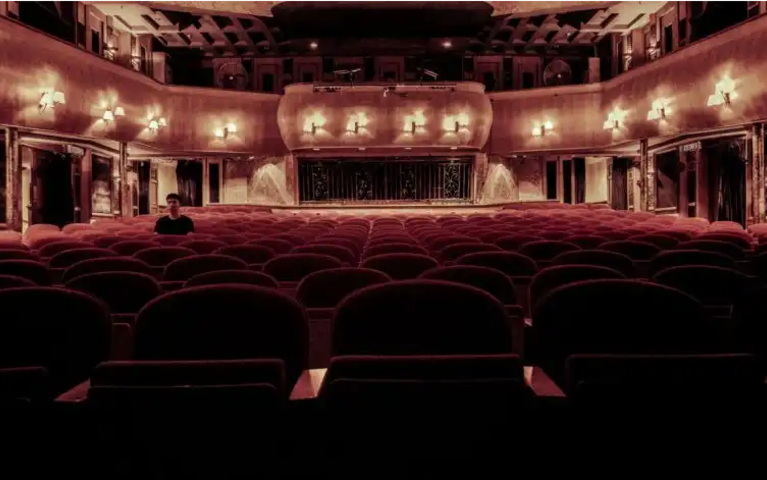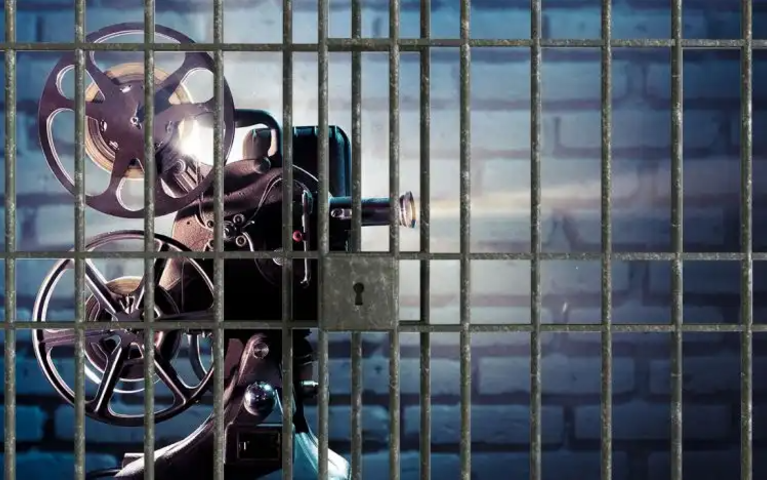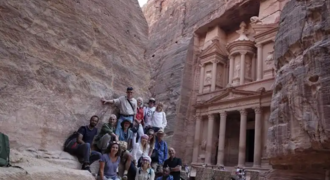Cinematic Escapism in the Time of Corona

These past few weeks have surely been a real long year, and I have the strangest utter conviction that a few people could use a cinematic stimulant; if you coincidentally find yourself with time to spare (which let’s be honest, you probably do), I’ve got a list for you of what I think are the most elevating films to watch during these troubling times. They are not necessarily my favourite films but probably the perfect movies for our times. Films also have the ability to transport us into a wonderful feeling of falling in love, excitement, optimism and utter elation. Who amongst us doesn’t need a fat dose of oxytocin to combat all the social distancing we’ve been doing these days? Let’s commence.
Some films that manage to lift us up by reaffirming the power of the human spirit speak to the unseen forces that merge us together as a species, reassure us that things can get better, such as Mary Poppins (1964) or Mrs. Doubtfire (1993); films that make us feel like we’ll never give up such as Shawshank Redemption (1994) or Forrest Gump (1994). And there are films that show us how worth living life can be such as Cinema Paradiso (1988), It’s a Wonderful Life (1946) or Intouchables (2011) or its American counterpart The Upside (2017).
However, if there’s one man and one film that makes me sleep easy at night knowing things are going to be okay, it’s got to be Mr. Rogers and the documentary Won’t You be my Neighbour? (2018). On top of being an exploration of life, lessons and legacy of the iconic children’s television host – Fred Rogers – it is the perfect film to remind the viewer that there was once someone out there who saw the best in all of us. I’ll basically roll my eyes when I hear about the power of positivity and my cynicism reigns supreme at the mention of it, but Mr. Rogers was the real deal.
Watching the film trace out his life, a picture begins to form of a man who made it his mission to treat the children around him as if all their feelings, even the silly ones, were worth being taken seriously. The man practised what he preached and cared for literally everyone whose path he crossed, and his message was actually quite a bit more sophisticated than people anticipated. The documentary later turns this radical empathy of Mr. Rogers onto unsuspecting adults and the audience, hitting the viewer with the sensation of being hugged by a cardigan sweater; the effect really is astonishing.
When it comes to the human spirit, maybe you’re looking for a little less warm hug, a little more hard-fought victory, a triumphant display over impossible odds; and we all love an underdog story. The Martian (2015), The Karate Kid (1984), My Cousin Vinny (1992) or The Bad News Bears (1976), A Knight’s Tale (2001) or my personal favourite, The Mighty Ducks (1992), but I have to go with the perfect underdog tale of my generation, Cool Runnings (1993).
Disney spent the 90s and early 2000s perfecting a formula of live action underdog films that gave us Remember the Titans (2000), Miracle (2004), Cinderella Man (2005) and Invincible (2006), which would make a fantastic movie marathon. However, in Cool Runnings, they struggle, they suffer loss and they learn; it’s delightful, full of smiles, and any real sense of accomplishment is achieved through the frames and brings an incredible sensation of joy for the team that braved social norms, the climate and won over the audience of the 1988 Winter Olympics in Alberta.
But maybe snatching victory from the jaws of defeat just does not get you where you need to be; we understand, not everyone roots for the underdog (you monster!). There are other ways to lift the spirit, sometimes the best medicine really is laughter, and when things look extra dire, it is only silliest films that will do. Maybe Blazing Saddles (1974), 21 Jump Street (2012), Elf (2003), School of Rock (2003) and Airplane (1980), or especially White Men Can’t Jump (1992), which believe it or not, was one of Stanley Kubrick’s favourite films, and once you watch its witty dialogue and hilarious performances, you won’t blame him.
But as far as I’m concerned, there is no film ever made filled with quite as much nonsense as the absolutely timeless Monty Python and the Holy Grail (1975). Continuously ridiculous and beyond illogical; the shenanigans of these oversized men in ill-fitting costumes still don’t really make much sense but somehow it worked well. Maybe it is the unusual combination of stupidity and brilliance of my personal favourite, the late Graham Chapman, or maybe it was the exaggerated accents or the loose collection of Arthurian sketches tied together by a minimum plot to find the Holy Grail. The film was dated before it was even screened in 1975 but the comedy is literally timeless. Whether it’s your first time or your 27th, you’ll have a blast.
Adjacent to utter silliness, are the films that make you grin with delight, gleeful high energy stories about characters you immediately love, treating each other shockingly well, even as they struggle. This is Paddington 2 (2017), Singing in the Rain (1952) and City Lights (1931) or any Wes Anderson’s film, but maybe skip The Royal Tenenbaums (2001) and wait for happier times. It’s almost like this category was literally made for Le fabuleux destin d’Amélie Poulain, better known in the anglophone world as Amélie (2001).
This technicoloured modern Parisian fairy tale is the perfect film to watch during times of stress and uncertainty (now sounds like a good time), most characters are introduced with their ultra-specific delights that make them the happiest, creating third dimensional characters that you rarely see again. As for the titular character, a shy and a smiling incarnation of chaotic good is the centre of all the events that occur in this film. Amélie is often running around Paris performing random acts of kindness with the calculated planning of a super villain, yet her joie de vivre is contagious, and I guarantee you will leave the movie grinning jusqu’aux oreilles.
One thing that movies are so very good at is returning us to a feeling associated with a bygone time and place, and in so doing transporting us with them; that can be unbelievably comforting, especially when the time and place are familiar and universal and safe like an idealised version of childhood. So perhaps films that make you feel like a child again, where adventures were around every corner and life was not playing so much for keeps. Maybe E.T. the Extra-Terrestrial (1982) or The Princess Bride (1987) or The Goonies (1985), or Jumanji (1995), and if you have over five hours of free time (yes, you’ve read that running time right) watch the Swedish work of genius Fanny and Alexander (1982), or even Zombieland (2009), if you’re feeling nostalgic for the 2000s, in desperate need for a silly and gory fun-ride that doesn’t take itself too seriously and you’re craving a Twinkie (and who isn’t). But of all the studios re-invoking what it was like to be small and in a world full of comfort and possibilities, Studio Ghibli may be the best. Spirited Away (2001) and Howl’s Moving Castle (2004) are all a blast and although my favourite Ghibli film of all time is Grave of the Fireflies (1988), I cannot stress how bad of an idea it is to watch it now. However, I believe the whole world could use a little bit more of My Neighbour Totoro (1988) right now.
Two girls and their father move to the Japanese countryside as it’s closer to their ill mother’s hospital. Uncertain at first, they eventually explore their new home, and ultimately meet Totoro; while the gentle story sees a sister’s scepticism, a turn in treatment, a lost girl and a desperate search, it is in the little moments with little bearing on the plot that one finds the depth of the anime’s heart. The small curiosities, imaginings, discoveries and moments of play that the film chooses to linger on will be intimately familiar to any viewer.
But maybe all of that is still a little much for you and what you really need is to mellow out, a kick back and an ultimate chill session on the couch, spend some time just hanging out away from the stress of a typical plot. Maybe you’re in a desperate need of a carefree cinematic experience. American Graffiti (1973) is a prototype here and it paved the way for everything else in this segment but you could also try The Big Lebowski (1998) and its laid-back attitude, or Ferris Bueller’s Day Off (1986) and the film’s immunity to concern, despite that Cameron is my spirit animal and I despised Ferris with a passion. And of course, Richard Linklater, who presented the ultimate double feature of relaxed marijuana-induced calmness of Dazed and Confused (1993) and its spiritual sequel Everybody Wants Some (2016). However, I must go with Bill Murray’s unflappable chillness in the face of literally anything else, and his masterpiece performance in Lost in Translation (2003) is my choice for the ultimate carefree attitude in the face of the uncertain.
Low on stakes, high on sense of time-and-place and togetherness, Lost in Translation sets you in an ultra-specific world with the kind of beautifully flawed people you would love to hang out with in Karaoke bars, late-night eateries and arcades around Tokyo. That is basically what they do for a couple hours: they hang out and discover the Japanese capital and as they bond and relate and marvel at the world and experiment with who they are and who they might be. The camera, music and storytelling invite you to hang out with the characters with little at stake, but an evening well-spent, which if you’re holed up at home for the last couple of months into some serious quarantine, it might be just what you need.
One step further past carefree movies and we find our way to the territory of small but beautiful hubs of peaceful films, those without hardly any conflict or even an ounce of plot, instead they feel like guided meditation sessions instead of cinematic experiences. These are movies like the Korean masterpiece, Spring, Summer, Autumn, Winter… and Spring (2003), the Vietnamese powerhouse of The Scent of Green Papaya (1993) or the Thai beauties, Uncle Boonmee Who Can Recall His Past Lives (2010) and Cemetery of Splendour (2015). But, my pick would have to be Samsara (2011) that just meditates on nature and quietly watches the wheels of life turn.
It’s a beautiful appreciation of these small poems of life in a mastery of entrancing softness; nothing really happens and if it does, it doesn’t happen fast. The camera rarely lingers on anything, and the density of actual plot is probably about one tenth of a fraction of what most modern cinema viewers would normally expect. Simply, you settle into it and allow it to wash over you in an almost trance-like experience of calm and beauty that is impossible to describe or explain. Watching this or any of the previous two entries in this trilogy feels like what it is to face loss and keep moving forward; it is occasionally surreal, always honest, splendidly shot and even in normal circumstances, worth the time, which is why I think it’s one of the best films you could watch at a time like this. Enjoy!
*Rick Hindi is the Assistant Festival Director of the Amman International Film Festival (AIFF); he has a passion for films, international relations, linguistics and anthropology.

